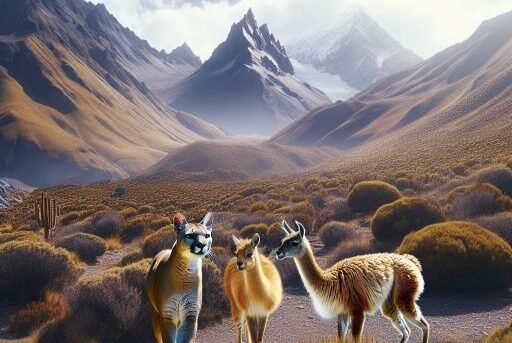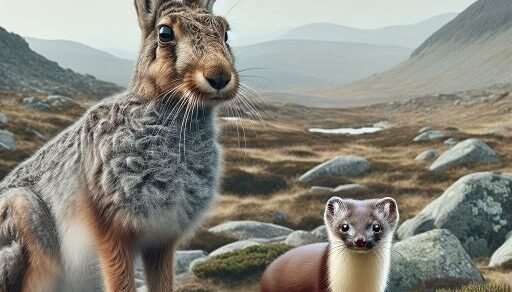Location and Habitat
The puma, also known as the mountain lion or cougar, is a highly adaptable feline that thrives in various habitats across the Americas. From the snowy landscapes of the Canadian Rockies to the dense forests of the Amazon and the arid regions of the American Southwest, the puma’s territory is vast and varied, allowing it to be one of the most widespread predators in the Western Hemisphere.
The vicuña, on the other hand, is native to the high Andean regions of South America, particularly found in countries like Peru, Bolivia, Argentina, and Chile. These delicate creatures are most commonly seen in the puna ecosystem, which features wide, windy grasslands sitting at elevations typically above 3,200 meters. The vicuña is highly adapted to this sparse and oxygen-poor environment, sporting a fine coat that provides insulation against the harsh Andean cold.
Puma vs. Vicuña Comparison
| Attribute | Puma | Vicuña |
|---|---|---|
| Size and Weight | Length: 1.5-2.75 m, Weight: 29-90 kg | Height: 75-85 cm, Weight: 35-65 kg |
| Ability to Finish Opponent | High (powerful predator, skilled hunter) | Low (primarily a prey animal) |
| Weaponry | Sharp claws, strong jaws, powerful limbs | Hooves (used more for escape) |
“`
Hunting and Skills
Pumas, also known as mountain lions or cougars, are skilled predators that primarily hunt deer, elk, and smaller mammals like rabbits and birds. They employ a stealthy approach, using the element of surprise to stalk and then pounce on their prey, often aiming for a lethal bite to the neck or head. Pumas are solitary hunters, which makes them highly adaptable to various environments, from forests to mountains.
Vicuñas, on the other hand, are prey animals found in the high Andean regions. They are a species of camelid, related to llamas and alpacas, and are known for their fine wool. Vicuñas are primarily grazers, feeding on the sparse grasses available in the high-altitude plains. To defend against predators like pumas, vicuñas rely on their keen eyesight and speed, often fleeing in groups to confuse their attacker. They are also known to have a hierarchical structure in their groups to help in alerting each other of impending dangers.
Puma vs. Vicuña Who Would Win?
The puma attacks with speed and power, using its sharp claws and teeth. The vicuña, primarily a grazer, lacks defense mechanisms against predators. The puma quickly overpowers the vicuña, targeting its neck for a fatal bite. The vicuña attempts to flee but cannot outpace the puma.
Winner: Puma, with a 95% chance of winning.




